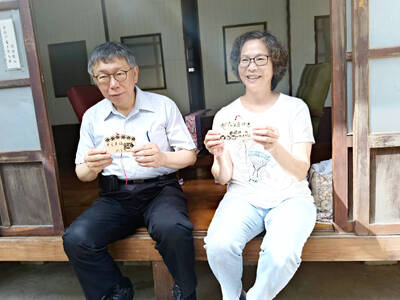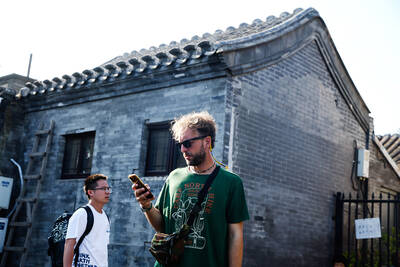Ahard-hitting, glossy trailer condemning the practice of “waterboarding” as a means of torture is to be launched in British cinemas next month, Amnesty International said Wednesday.
Amnesty’s film, called Stuff of Life, will be shown in some 50 cinemas in the UK from May 9.
Its “shock value” is enhanced, according to Amnesty, by the fact that the film is effectively “disguised” as a bottled water or vodka advert, and presented in the “glossy” style known from consumer goods advertising.
“Our film shows you what the CIA doesn’t want you to see — the disgusting reality of half-drowning a person then calling it “enhanced interrogation,” Amnesty director Kate Allen said.
“Everyone who sees this terrifying film ought to take action to stop it happening in the real world.”
Meanehilr Eli Roth, the director of the relentlessly gruesome Hostel movies, is turning down the horror with his next project.
Roth told reporters on Wednesday he is two weeks away from finishing a script for a science-fiction action film inspired by the mainstream hits Cloverfield and Transformers.
“This will be my first big-budget, PG-13, mass-destruction movie,” he said backstage at the music industry’s NME Awards in Los Angeles. “I went total chaos and pandemonium.”
He declined to detail the plot ahead of a “big announcement” next month.
Films rated PG-13 in the US strongly caution parents that some material may be inappropriate for children under 13. But they are easier to market than R-rated films, which require viewers under 17 to be accompanied by an adult.
“I feel like I pushed the violence in R movies about as far as I can push it. I feel like I’m bled out. I wanna switch it up,” said the 36-year-old protege of Quentin Tarantino.
“Everyone I know has been saying ‘When are you gonna do a movie my kids can see?’ And finally, I’m gonna make a movie that 13-year-old kids can see.”
Roth was in theaters last year with Hostel: Part II, the latest in a string of films belonging to the so-called “torture porn” genre. As with its 2005 predecessor, it revolved around hapless backpackers who are killed for sport by paying customers in Slovakia.
Critics were appalled and audiences did not exactly rush to see it. Still, it was profitable even before its DVD release, Roth said.
The shooting of the latest James Bond film Quantum of Solace is proving dangerous for stuntmen after a second crash Wednesday in just five days left one daredevil in intensive care.
The accident happened when the car used by two stuntmen rammed into a filming lorry and then into a wall on set near the picturesque Lake Garda in northern Italy, ANSA news agency reported.
One of the two men, a Greek national, ended up in intensive care in a hospital in the nearby town of Verona.
This was not the first accident to befall the crew in recent days after a Bond stunt driver crashed 007’s famous Aston Martin DBS into Lake Garda ahead of filming on Saturday.
Quantum of Solace, the second Bond film to feature 40-year-old British actor Daniel Craig as the suave secret agent is set to be released later this year. The film picks up where the last installment Casino Royale left off.
Cannes Critics Week, which runs in parallel with the film festival next month, is placing this year’s spotlight on budding talent from across Europe, in contrast with last year’s South American flavor.
“We were struck this year by the power and diversity of young European film-makers, while last year we were flooded by offers from Latin America,” the head of the May 15 to May 23 event, Jean-Christophe Berjon said.
Of the seven films selected yesterday to compete for the Critics Week award for a best first or second feature, one is from Argentina while the others are from Britain, Bosnia, Belgium, Germany, France and Russia.
Following is the list of films chosen:
● The Stranger in Me by Emily Atef, Germany.
● Moscow, Belgium by Christophe van Rompaey, Belgium.
● Better Things by Duane Hopkins, UK.
● La sangre brota by Pablo Fendrik, Argentina.
● Les grandes personnes by Anna Novion, France.
● Snow by Aida Begic, Bosnia/France.
● Everybody Dies But Me by Valeria Gaia Germanica, Russia.

Climate change, political headwinds and diverging market dynamics around the world have pushed coffee prices to fresh records, jacking up the cost of your everyday brew or a barista’s signature macchiato. While the current hot streak may calm down in the coming months, experts and industry insiders expect volatility will remain the watchword, giving little visibility for producers — two-thirds of whom farm parcels of less than one hectare. METEORIC RISE The price of arabica beans listed in New York surged by 90 percent last year, smashing on Dec. 10 a record dating from 1977 — US$3.48 per pound. Robusta prices have

A dozen excited 10-year-olds are bouncing in their chairs. The small classroom’s walls are lined with racks of wetsuits and water equipment, and decorated with posters of turtles. But the students’ eyes are trained on their teacher, Tseng Ching-ming, describing the currents and sea conditions at nearby Banana Bay, where they’ll soon be going. “Today you have one mission: to take off your equipment and float in the water,” he says. Some of the kids grin, nervously. They don’t know it, but the students from Kenting-Eluan elementary school on Taiwan’s southernmost point, are rare among their peers and predecessors. Despite most of

The resignation of Taiwan People’s Party (TPP) co-founder Ko Wen-je (柯文哲) as party chair on Jan. 1 has led to an interesting battle between two leading party figures, Huang Kuo-chang (黃國昌) and Tsai Pi-ru (蔡壁如). For years the party has been a one-man show, but with Ko being held incommunicado while on trial for corruption, the new chair’s leadership could be make or break for the young party. Not only are the two very different in style, their backgrounds are very different. Tsai is a co-founder of the TPP and has been with Ko from the very beginning. Huang has

A few years ago, getting a visa to visit China was a “ball ache,” says Kate Murray. The Australian was going for a four-day trade show, but the visa required a formal invitation from the organizers and what felt like “a thousand forms.” “They wanted so many details about your life and personal life,” she tells the Guardian. “The paperwork was bonkers.” But were she to go back again now, Murray could just jump on the plane. Australians are among citizens of almost 40 countries for which China now waives visas for business, tourism or family visits for up to four weeks. It’s